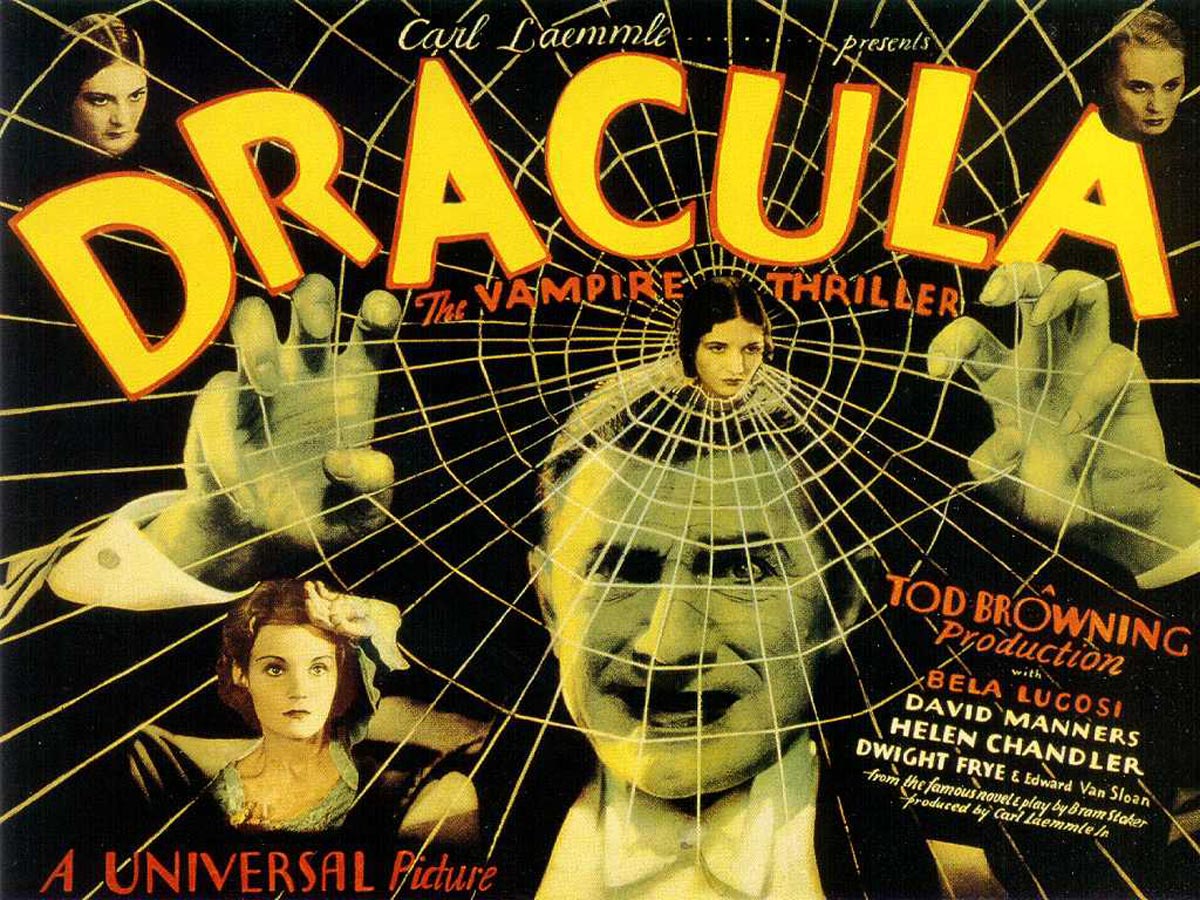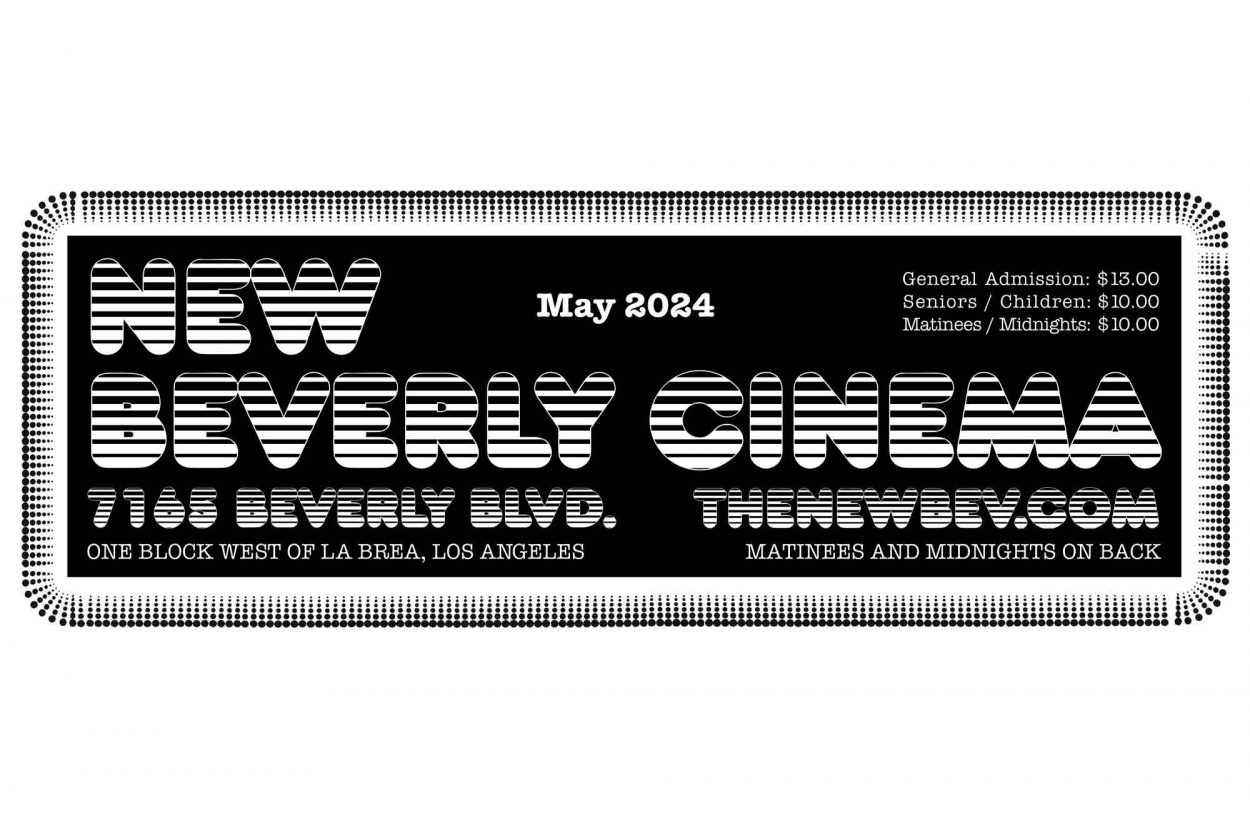Tod Browning’s Dracula was made in 1931, but it feels somehow even older. The film possesses an antediluvian quality, as if it somehow slipped through a membrane in time from a long-forgotten ancient period of eldritch magic, when the separation between the human world and the demon world was less defined. Although directed by Tod Browning and filmed by Karl Freund, Dracula – with its nightmarish qualities – feels like it rose spontaneously into the cinematic firmament, fully formed, untouched by human hands. To this day, it remains one of the most terrifying films ever made, and shall it ever remain.
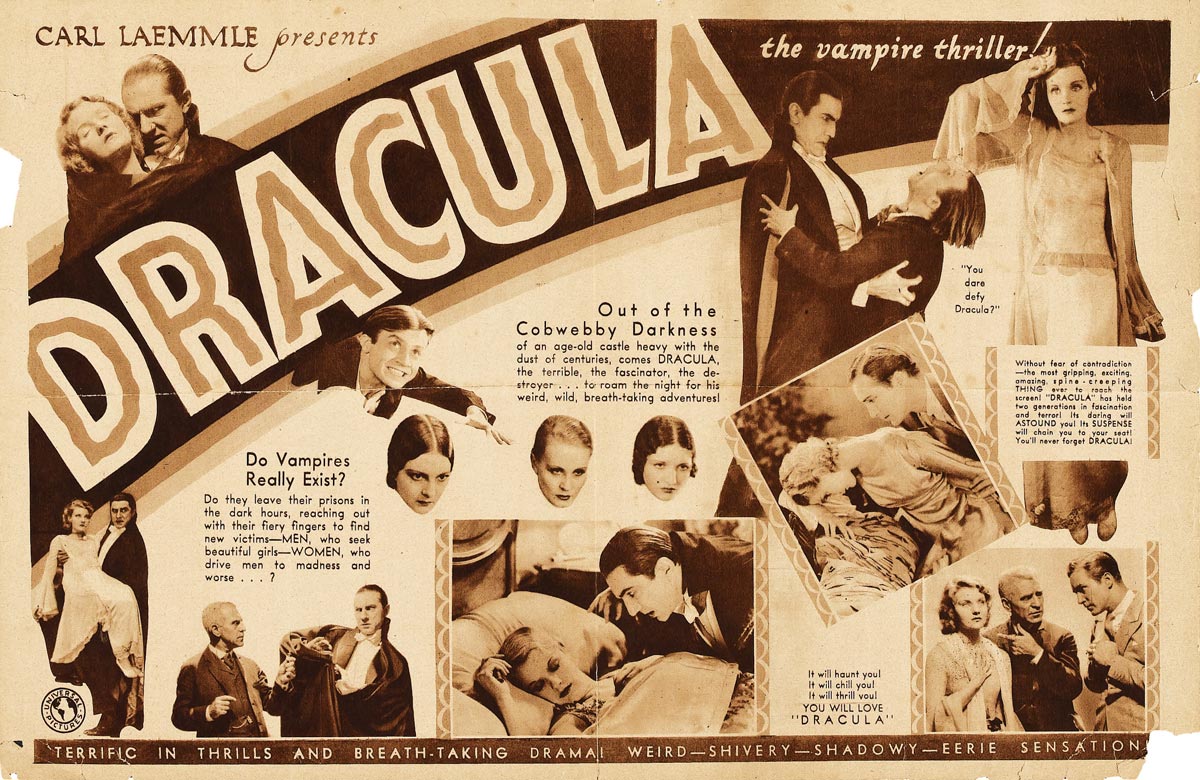
Modern audiences, of course, may beg to differ. There are numerous reviews and think pieces in the world, you may find, that will praise Bela Lugosi’s iconic performance as the weird-yet-sexy Count. There are many others which discuss the glorious overacting of Dwight Frye as the maniacal Renfield. There are endless essays about how Karl Freund worked with F.W. Murnau on the equally iconic 1922 classic Nosferatu, and how Freund’s background on that film was largely what shaped the look and feel of the 1931 feature, which Browning, some have said, only partly directed. Men and women more talented than I have meticulously collected details of Dracula‘s movement from novel to screen (I recommend anything written by David J. Skal on the topic) and offered up their insightful commentary about what the story means, and why it remains so appealing.
Indeed, in recent years, I have personally encountered a miniature movement to have Dracula’s place in the cinematic canon to be expanded to include – just as passionately – George Melford’s Spanish language version of Dracula (which starred Carlos Villarías as the Count, and which was filmed on the same sets as Browning’s film after the American production had wrapped for the day). I admit that the Melford film is, especially to a modern eye, the more conventionally watchable of the two.
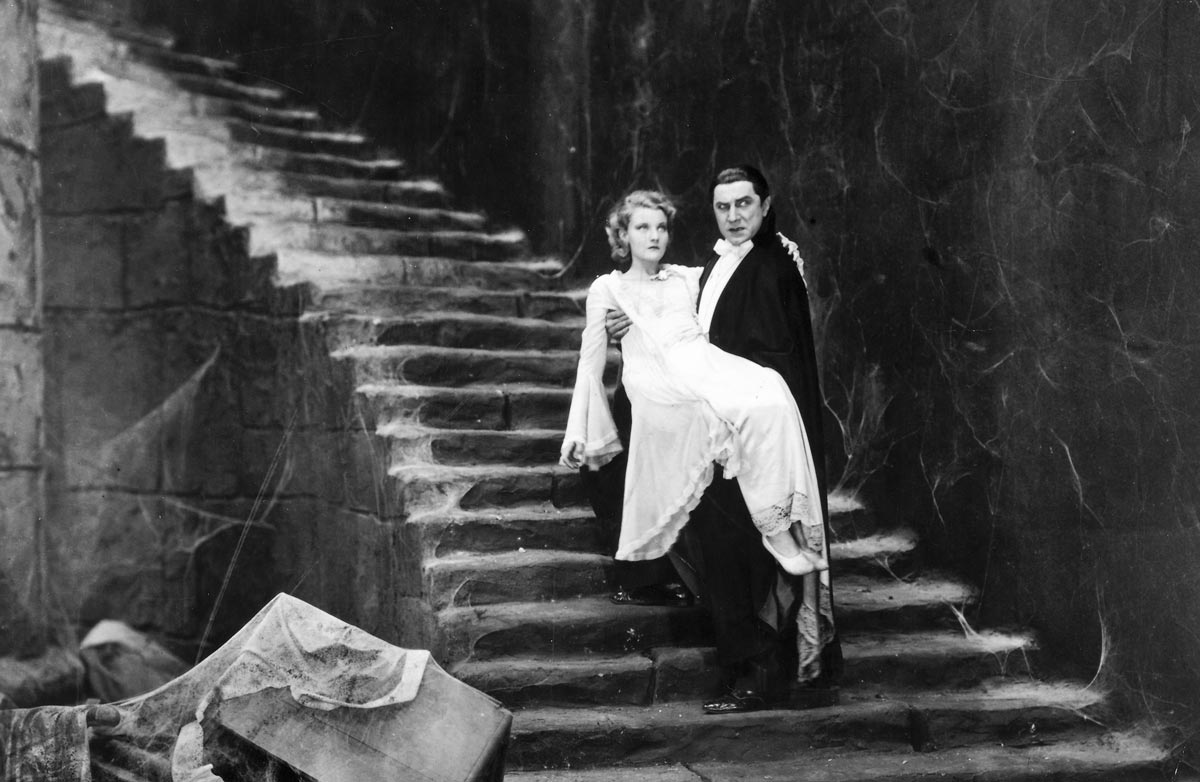
But of these essays and movements and breathless philosophical discussions, one may find that one vital element is frequently glossed over: The immediate, emotional impact of Dracula has on its audiences. Dracula is – to put it shortly – still gloriously and powerfully scary. It is a nightmare of a film. While some more action-hungry viewers may bristle impatiently at its theatrical line reading, still characterization, or stately blocking, it’s those very qualities that also eventually draw them in. Dracula plays like the film you watch in a dream, one you can’t look away from and that slowly infiltrates the room around you. It’s artificial, but its artificiality – it’s eerie, eerie unreality – makes it more pure; after a while you begin to realize that the fourth wall is located behind you. When Bela Lugosi lifts his cape, we’re seeing both a Hungarian actor… and the real Dracula. It’s a film of dizzying, off-putting madness.
And, to reiterate it for the umpteenth time, the film stands largely because of the performance of Bela Lugosi. Lugosi had performed the role of Dracula on stage in a 1927 production of a play by Hamilton Deane and John L. Balderston. It’s been said that Lugosi, not entirely skilled in English when he began his career, learned his lines phonetically. If this is true, then Lugosi took his slightly skewed and gloriously theatrical performance deeply to heart, living his actual life as a charming, odd boogeyman. He would periodically resent his position as a scream king, but always came back around to reluctantly loving it, even in his sad dying days (as dramatized in Tim Burton’s 1994 film Ed Wood for which Martin Landau won an Academy Award for playing Lugosi).
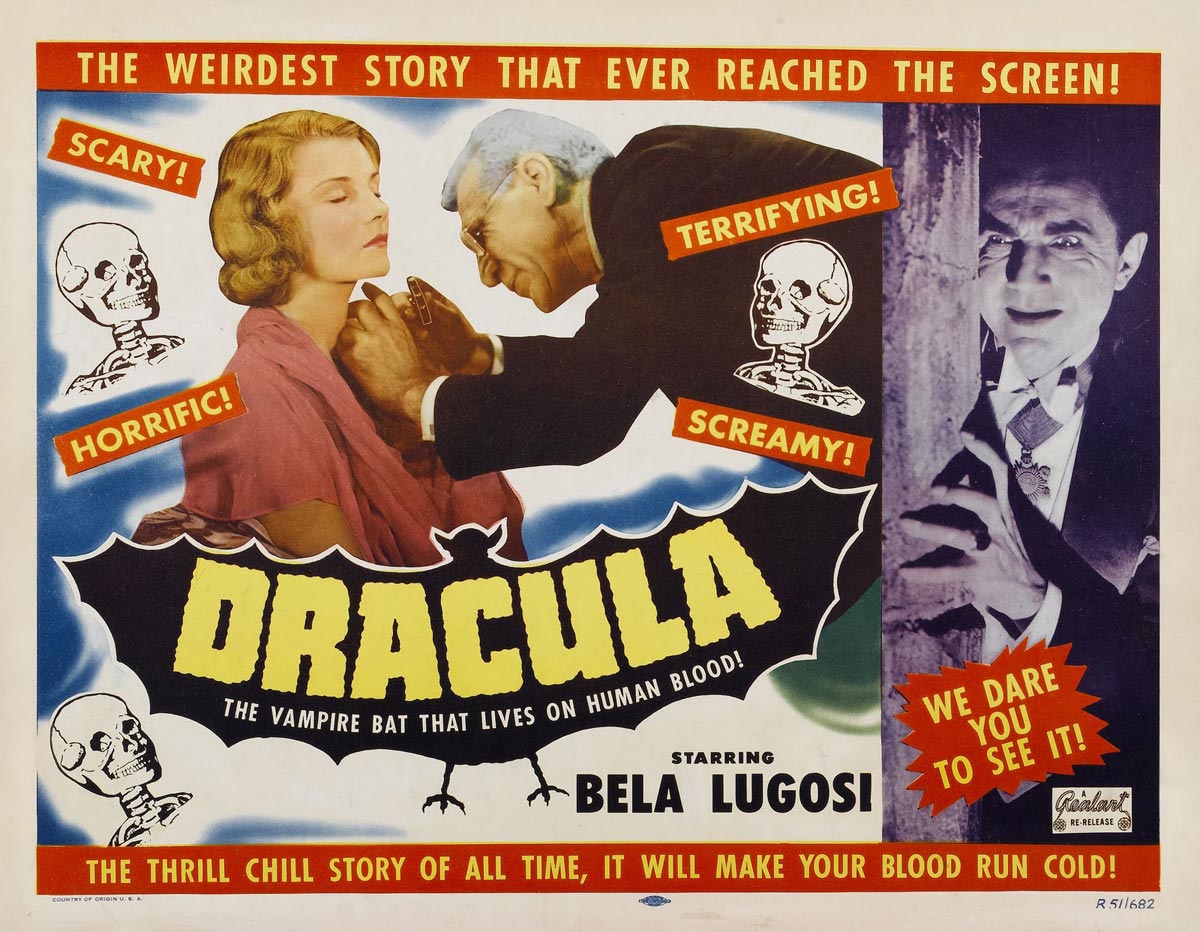
What is it about Dracula that keeps us coming back? The short answer is sex, the long answer sexual anxiety. Bram Stoker’s bloody 1897 epistolary told the story of a handful of modern souls who wandered into the decaying kingdom of Vlad Țepeș, once a 15th century monarch, now an evil mustachioed beast that must flee his rotting castle and feed on members of the urban masses in England, carrying a plague with him. One of the central conceits of Dracula is that evil cannot enter into your vicinity unless you invite it, and not only is the seductive, Eastern European sensuality of an older, old world aristocrat able to break down the lustful barriers of the tightly wound maidens of the modern city (exemplified by the character of Lucy), but Stoker seems to be making a comment on how the darkness of modern, urban life – and how humanity can now only connect through letters and distances – has invited the beasts of the old world into the new. There is a sense that the world has transgressed, and it’s the old, ancient, post-Edenic infiltration of demonic sexuality that has allowed time to fall out of joint.
And while this intellectual reading of Original Sin is certainly at play in Stoker’s novel, and, by extension, Browning’s film, it wouldn’t much matter if the fear and terror weren’t already at the forefront, luring us in with its long, ethereal silences; no matter how wonderful a film may function as metaphor, it must first grab us with something other than pure intellect in order to leave its brand.
And brand us Dracula does. No other film has been quite as influential to a genre. Because of Dracula, we know how vampires are supposed to look and behave. And from Dracula are we offered the ultimately alluring bargain of vampire-dom: One can live forever with a handsome, sexy Eastern European, indulging in sensual pleasure for all eternity. But, in exchange, you must live in exile, in the deep, distant shadows, emerging only to drink the blood of the living. You will not die. But you will be a monster. When wrapped up in the veil of lust, that’s a tough call.
All movie Draculas, and almost all movie vampires, that followed the 1931 original are a reaction to, or a criticism of it. And despite our tendency to intellectualize the film, it remains relevant for reasons more immediate than its legacy as a podium object. It’s own nightmarish, ancient emotions – its fear, its sexual anxiety, its surreality – will always be there, waiting to be unlocked, waiting in the shadowy, spidery vaults of forgotten time.
